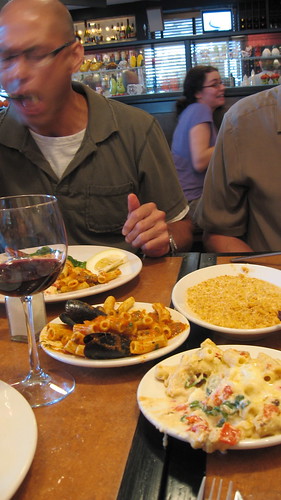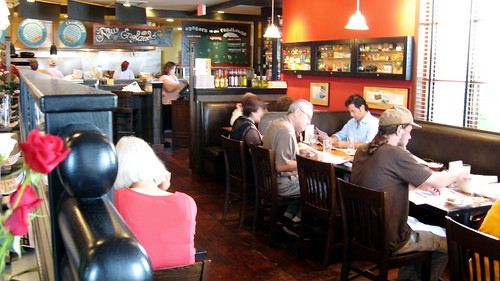Up until recently, I’ve never considered myself a real fan of “American cuisine.” Granted, I love apple pie and hamburgers, but when it comes down to great cooking, I tend to look to other countries for inspiration.
And I’m not alone. Even in the finest kitchens in the United States, American fare isn’t exactly heralded as high cuisine. This country may have some amazing, world-reknown chefs, but more likely than not, these stand-out culinary stars are cooking a hybrid of gastronomic styles. Take for example Alice Water’s Cal-French, Mario Batali’s Americanized Italian, David Myer’s Cal-French-Japanese, or even David Lentz and Suzanne Goin’s Baltimore-French-Japanese. When it comes to being an American chef, it’s all about expressing your local ideas and borrowing from the culinary masters of other cultures.
When you come from a country known to the world as the great American melting pot, it can be difficult pin-pointing the truly American dishes. But if you start to ask around, you’ll find there are a number of dishes that American’s clearly call their own.
A Culinary Education
After my recent trip to Michigan (and multiple trips to Zingerman’s and all of its many incarnations), I’m starting to understand what makes American food great.
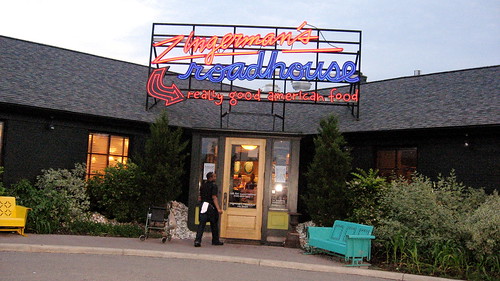
The Roadhouse, the seventh in the family of Zingerman’s food-friendly ventures, offers diners a chance to eat their way through many of the culinary traditions and regional cooking styles of America.
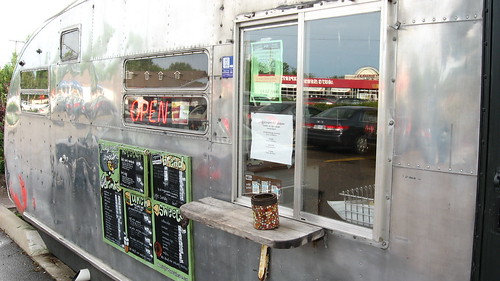
Diners can grab take out from the cleverly re-tooled and permanently parked silver bullet camper for drive-through, or may linger at a table in the spacious restaurant that offers bar seating, multiple dining areas, a back patio and a private dining room.
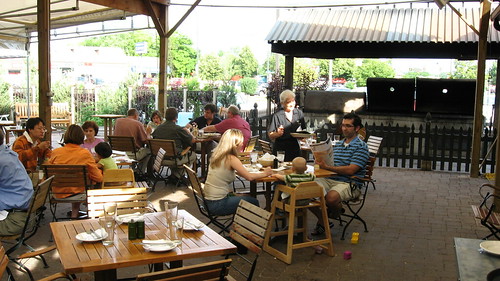
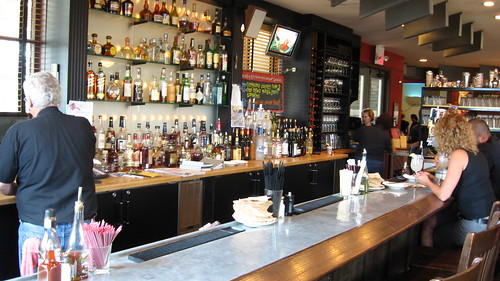
The ever-friendly and well-trained Zingerman’s staff seem as if they’ve been waiting all day just to happily guide you to your table or barstool. The dining room is open and inviting with its kitchy salt-and-pepper displays, open kitchen and hand-printed music posters lining the walls.

In the tradition of Zingerman’s, the drinks are handcrafted and are made with the local produce, freshly squeezed fruit juice and house-made marachino cherries. The bartenders smile as they muddle and mix handcrafted cocktails like Mojitos or their signature cocktail the Knickerbocker, made with Brugel Dominican Dark Rum, Bol’s Orange Curacao, fresh raspberries and freshly squeezed lemon juice.
The education begins
The first course in American cuisine begins with Chef Alex’s appetizer sampler.

In this one dish, diners get a cross-country tour of flavors. Starting with the South and its hush puppies (made with organic yellow and blue corn) and the moist and tender roadhouse ribs, our palates travel to Baltimore and its sweet and salty crab cakes. The appetizer plate tour ends at the Tex-Mex border with a cheesy, wild mushroom quesadilla. Other not to be missed appetizers are the hand-cut sweet potato fries with a spicy mayo and Ari’s Pimento Cheese, a classic southern starter of celery “chips” served with a dip of aged Vermont cheddar, mayo and chopped pimentos.

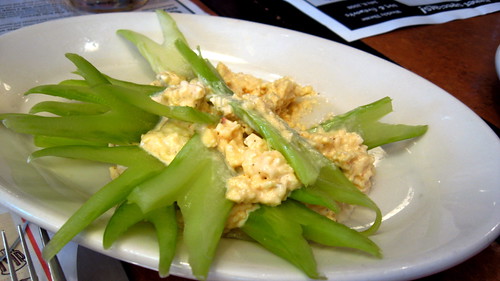
Getting an advanced degree
Instruction in American culinary appreciation is taken up a notch at the Roadhouse with its entrees. The North Carolina pulled pork is moist and rich with salty sweet flavors from almost an entire day’s worth of roasting. The meat is hand-pulled, chopped and blended with a spicy vinegar sauce and served with Michigan-grown mashed potatoes and served with Southern style braised greens. The Texas Cabrito, a slow-smoked, hand-pulled, free-range goat, with a special basting sauce, is both earthy and moist.
After eating the Roadhouse Buttermilk-Fried, Free-Range Chicken, I really began to appreciate my nationality.

Fried chicken nirvana is discovered once it is delivered to the table in a paper-wrapped picnic box. Thanks to the local, Amish farm-raised, free-range chicken, the meat tastes more real than any fast food chain’s ever could. The meat is moist and plump while the buttermilk batter is crispy and light–offering the perfect counterpoint to the delicate earthiness of the meat. Sides of local mashed potatoes, brown gravy and yellow mustard slaw make the dish an American inspiration.
My husband was silent—with the occasional moans of culinary happiness–as he savored every bite of his full rack of Neiman ranch pork ribs. Served on a generous portion of creamy grits, the long cooked ribs are so moist and tender it doesn’t take much more than a gentle nudge of your fingers to get the sweet and savory meat to fall off the bone.
The side dishes are equally impressive as the entrees they support. Take for example the creamed corn made from John Cope’s dried sweet corn, made from John Cope’s dried sweet corn, a classic staple in Pennsylvania since the 1900’s.
Picked at the peak of sweetness, the dried corn not only imparts sweetness to the dish, but also gives a playful texture that works well with thin bath of cream. The macaroni and cheese, an American staple, gets its proper respects with an assortment regional takes on the classic idea. Our favorite was the Roadhouse Macaroni & Cheese, made with a 2 year old Vermont raw-milk cheddar and the Martelli family’s artisanal macaroni from Tuscany.
Rounding out the regional education in American fare, are the decadent desserts.

Ari’s Original Doughnut Sundae, is a donut smothered in a bourbon-caramel sauce, vanilla gelato, whipped cream and Virginia peanuts. The Magic Brownie Sundae, a quintessential American classic, is a Bakehouse brownie drowned in chocolate sauce, vanilla gelato, whipped cream and toasted pecans.But it was the pecan pie, a pile of toasted pecans surrounded by a rich brown sugar custard made from unrefined Mauritian brown sugar, that made me want to stand up and sing the national anthem.
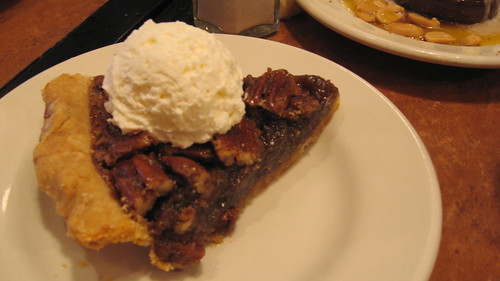
A trip to Zingerman’s Roadhouse is not only a great place to eat, it also offers the observant guest an education in quintessential American food and what makes it great. Suddenly, I’m really proud to be an American.
Zingerman’s Roadhouse
2501 Jackson Ave.
Ann Arbor, MI 48103
(734) 663-3663

